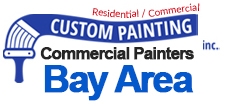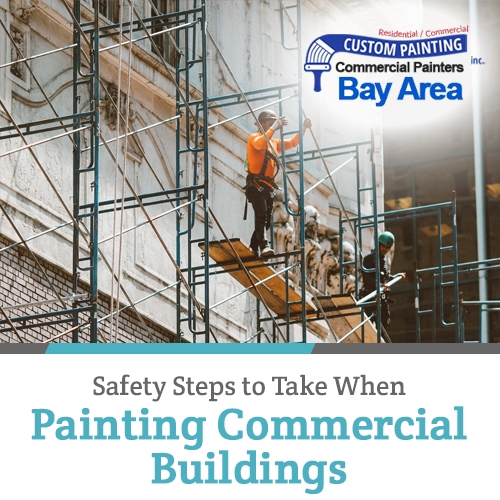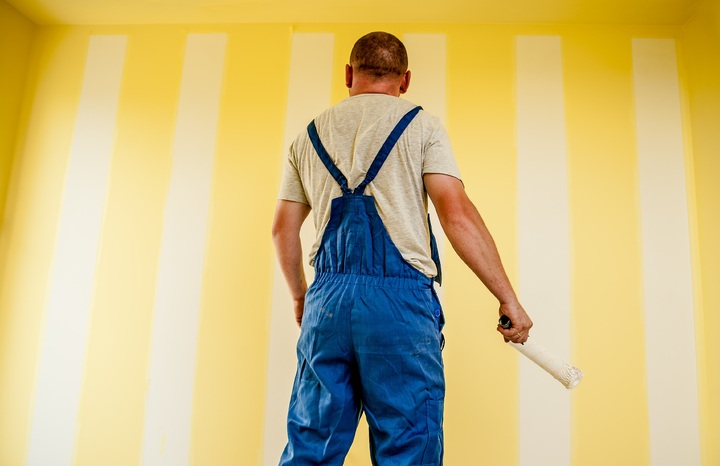It’s a fact that commercial painting in the Bay Area comes with risks, whether it’s inhaling toxic paint fumes or painting a multi-story apartment building.
That is why commercial painters always adhere to safety guidelines provided by the company to prevent hazards as much as possible. Safety is always a top priority for the paint crew, occupants, and visitors in a commercial building being painted. This article focuses on some safety measures that commercial painters must follow during a project.
Before you assign commercial painters to work on your commercial property, don’t forget to discuss safety measures with them. You must make sure that commercial painters are following the safety measures. The list below details the steps that your paint crew should follow before every commercial painting project:
1) Inspect the equipment
Professional commercial painters check their equipment before beginning the project as part of their routine, especially power tools and any equipment that runs on electricity. It ensures that no malfunction occurs while the paint crew works, preventing hazards. The painters may even hire certified electricians to inspect the equipment painting.
2) Inspect the site to be painted
Once you have decided to have your commercial space painted, it is easy to want to start it right away. But a little planning and preparation can go a long way and help you to avoid potential issues. First on the planning agenda is to inspect your space to be painted.
Inspection of the commercial building to be painted is crucial to ensure the site is completely safe for the paint crew. During an inspection process, the crew will look for damaged or dilapidating parts that can fall off, which can otherwise cause injury to them. And if they find such an area, they will notify you (commercial building owner) to fix it first.
Exposed electrical wires can lead to electrical hazards. So, while inspecting the commercial building, professional painters will look for open wires with free-flowing electric current.
3) Keep first-aid kits at hand
Professional commercial painters must keep first-aid kits within reach as they can sometimes be lifesavers. A few basic treatments can work if a painter suffers from a minor cut or injuries on the site. So, a true commercial painting professional will never ignore the importance of these life-saving kits.
4) Wear protective gear
Before embarking on any painting project, commercial painters must wear the right gear to protect them from dripping or splattered paint, paint fumes, sanding dust, scrubbing, and accidental falls.
These protective gear include gloves, eyewear (such as a face shield or pair of goggles), a dust mask or respirator, a hard hat, coveralls, shoe covers, and a fall arrest system with carabiners and harnesses.
5) Inspect the ladders and scaffolding
In general, commercial painting is larger in scope than residential painting. It involves ladders and scaffolding to reach the high walls and ceilings. To prevent hazards, professional painters always check their ladders, scaffolding, ropes, harnesses, etc., before proceeding with the paint job.
While inspecting ladders and scaffolding, painters see if they are strong, stable, and in the best shape overall. Otherwise, they will replace the existing ladders, scaffolding, ropes, and harnesses with newer ones.
No matter how stable your ladder or scaffolding is, there’s a greater risk of falling if the painters don’t practice safety while climbing up or getting down from it. Therefore, it is critical to practice ladder or scaffolding safety.
6) Let the occupants know about the painting project in advance
If you have decided to allow your business to remain open while the painting project takes place, it’s important to inform everyone in the building about it in advance. Provide the occupants with specific dates and times that the painters will be around and notify them if there will be any changes to entry, parking, or general use of the building during business hours.
The sooner you give the occupants the notice, the easier it will be for them to plan accordingly. The occupants need to be aware of the upcoming maintenance so that there will be less chance of any inconveniences that might otherwise occur.
7) Make sure the paints are safe
Being the owner of a commercial building, it is your responsibility to make sure that the occupants and paint crew are safe and protected while your site is undergoing maintenance. No matter what kind of commercial building you own, it is important to consider the amount of paint that is circulating around the room while your paint crew is working.
Make sure to choose paints with low or zero levels of volatile organic compounds (VOC), bring in as many fans as possible, and open doors and windows to let the paint fumes out and the fresh air in. That way, your room will be well-ventilated, and your paint crew and the occupants of your building should be able to manage the environment well enough to prevent serious health risks.
8) Paint during the off-season
If you’re planning for interior painting only, then it might be easier for you to get away with painting during the fall, winter, or early spring when demand for paint jobs becomes low (and slow). It will save you money and, ultimately, save you from headaches, especially if you wish to have your painting done after office hours or on weekends.
And since project demands are low during the off-season, your painting contractor will have more flexibility in their schedule when they are not rushing to get the paint job done.
Don’t hold off on your regular maintenance because your commercial building is occupied. Work with the best painters in the Bay Area. They adhere to occupational safety standards and know how to work around your schedule and with your occupants to achieve the best results. Notifying your occupants and tenants about the upcoming maintenance in advance will allow them to prepare for the work to be done and the sooner the project will be completed.



